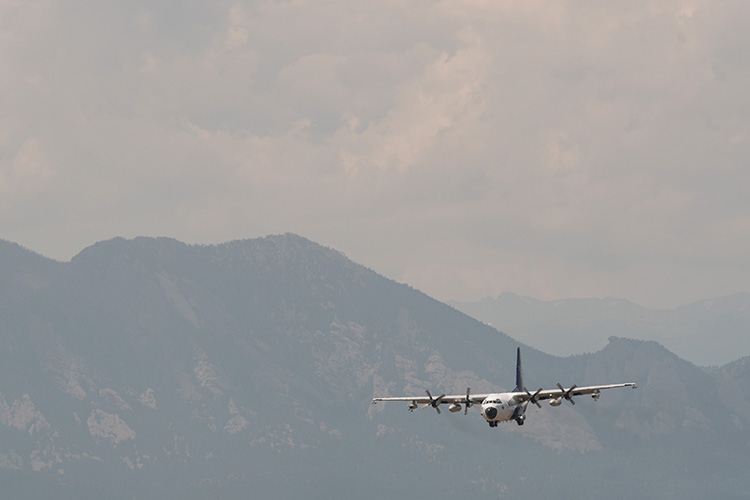WE-CAN recap: Cracking the chemistry of wildfire smoke
A team of Colorado State University scientists led by Assistant Professor Emily Fischer spent the summer flying into wildfire smoke to analyze its composition in the largest, most comprehensive campaign of its kind to date. Five universities and the National Center for Atmospheric Research (NCAR) collaborated on the Western Wildfire Experiment for Cloud Chemistry, Aerosol Absorption and Nitrogen, or WE-CAN, which involved a C-130 research aircraft loaded with scientific instruments and 15 scientists per flight.
Based in Boise, Idaho, the flight crew flew 16 six-hour missions to collect smoke samples and data. Boise was chosen because almost every August there is a wildfire burning within a two-hour flight of the city. The WE-CAN team included around 100 scientists and engineers, with many of them stationed on the ground, monitoring fires, smoke and weather to guide the plane.
Fischer directed the campaign from the cockpit.
“The visibility was so poor that we had to use a completely different flight planning strategy than I anticipated,” she said. “Decisions in the cockpit were essential.”
The campaign’s objectives were to determine what the smoke is made of, how it changes over time and as it travels, how it affects clouds, how the type of fuel affects smoke composition, and how the fire’s temperature affects the smoke’s chemistry. The results will bring insights on air quality, health impacts, weather and climate.
Read the full Source article, “WE-CAN seeks to crack chemistry of wildfire smoke.”



